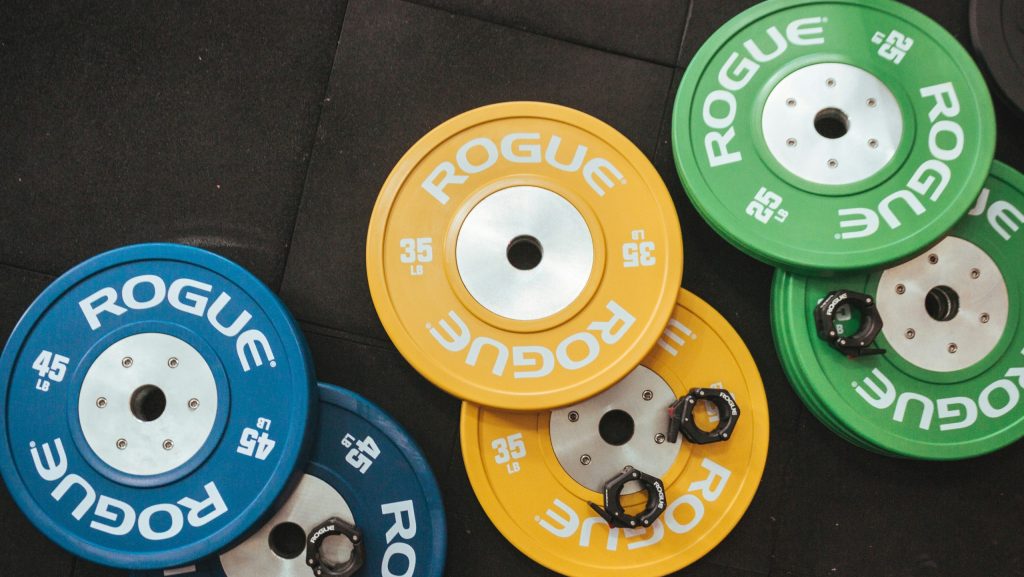Table of Contents
Starting fitness in your 40s is crucial for maintaining health and improving longevity. This guide provides essential information for beginners who are looking to include fitness activities in their daily routines, regardless of previous experience. Engaging in regular physical activity at this age can greatly decrease the risk of chronic diseases such as heart disease, diabetes, and osteoporosis, and also support mental health by improving mood, reducing stress, and enhancing cognitive functions. The article simplifies the initiation of a fitness program, specifically designed for those who have not been consistently active.
Did you know? Initiating an exercise routine in your 40s can significantly decrease your risk of chronic diseases and enhance your mental health.
Key Areas of Focus
- Why Start Fitness in Your 40s? – Exploring the health benefits of physical activity.
- Assessing Your Current Fitness Level – Methods for evaluating physical conditions to customize a safe fitness plan.
- Essential Exercises to Get Started – Introduction to straightforward, effective workouts suitable for beginners.
- Creating a Sustainable Workout Routine – Strategies to integrate exercise into a regular schedule.
- Overcoming Common Challenges – Addressing typical hurdles such as time constraints, loss of motivation, or physical limitations.
By understanding the benefits of fitness at this life stage, evaluating your current fitness status, and learning about effective exercises, you will be better equipped to tackle challenges and lead a healthier lifestyle. The subsequent sections provide detailed strategies to help you maintain consistency and make fitness a lifelong habit. With the right planning and dedication, starting a fitness routine in your 40s can lead to a healthier, more active lifestyle.
Starting Fitness in Your 40s: Essential Health and Psychological Benefits
Starting a fitness regimen in your 40s is essential for improving both physical and mental health. With metabolic rates slowing and the increased risk of health conditions associated with age, regular exercise plays a crucial role in managing health and enhancing life quality.
Health Benefits
Physical activity after the age of 40 is crucial for maintaining cardiovascular health and effectively managing weight. Regular exercise strengthens the heart, lowers cholesterol levels, and improves blood circulation, reducing the risk of heart disease and stroke. Additionally, by increasing muscle mass through strength training, individuals can boost their metabolic rate, aiding in efficient calorie burning and weight management. This contributes to reducing the risk of conditions like type 2 diabetes and hypertension.
Did you know? Exercise in your 40s boosts cognitive function, keeping the mind sharp and improving memory as cognitive decline often begins subtly around this age.
Psychological Benefits
Regular physical activity is vital for reducing stress, anxiety, and symptoms of depression, which can become more prevalent in midlife. Exercise stimulates the release of endorphins, chemicals in the brain that act as natural painkillers and mood elevators. Furthermore, regular physical activity enhances cognitive function, preserving memory and sharpness of mind, which is particularly important as subtle cognitive declines may begin in the 40s. It also promotes better sleep, essential for overall mental health.
| Health Aspect | Benefit |
|---|---|
| Cardiovascular Health | Reduces risk of heart disease and stroke |
| Metabolism | Increases metabolic rate, aiding in weight management |
| Muscle Mass | Helps in maintaining and increasing muscle mass, crucial for metabolic health |
Long-Term Impact
Regular physical activity has significant long-term benefits, including improved bone density and joint health, which help prevent conditions like osteoporosis and arthritis. Maintaining regular exercise can also preserve mobility and independence, enhancing quality of life in later years. Furthermore, active individuals tend to enjoy increased longevity by maintaining vital bodily functions and preventing various chronic diseases.
Incorporating fitness into daily routines in your 40s is critical for enhancing overall health and well-being. The benefits go beyond immediate physical improvements to influence mental health and promote longevity. The following sections outline specific advantages, providing strong reasons to prioritize fitness now for a healthier future.

Assessing Your Current Fitness Level at 40
Assessing your current fitness level is an essential initial step when starting a fitness regimen in your 40s. It is crucial to understand your physical capabilities and limitations to ensure you choose exercises that are safe and effective. This process reduces the risk of injury and maximizes the benefits of physical activity by tailoring your fitness program to your specific needs.
Self-Assessment Techniques
Self-assessment is an accessible way to start understanding your fitness level. Various simple tests can measure cardiovascular fitness, muscular strength, flexibility, and body composition. For cardiovascular fitness, a timed walk or run can help gauge your endurance and heart rate response. To assess muscular strength, you might perform a number of push-ups or sit-ups within a minute. Flexibility can be tested by reaching towards your toes while seated on the floor, which indicates the flexibility of your lower back and hamstrings. Additionally, measuring your waist circumference provides a basic indication of your body composition in relation to health standards.
- Cardiovascular Fitness: Timed walk or run to measure heart rate response and endurance.
- Muscular Strength: Count of push-ups or sit-ups performed in a minute to assess strength levels.
- Flexibility: Reach test to determine flexibility of lower back and hamstrings.
- Body Composition: Waist circumference measurement against health standards to assess body fat.
Professional Health Evaluations
Professional health evaluations offer a more comprehensive understanding of your fitness and health status. These evaluations can include a physical examination by a doctor, cardiovascular testing under supervised conditions, and an assessment by a physical therapist to check for musculoskeletal imbalances or chronic conditions that might impact your exercise capabilities. Health professionals can also provide advice on any precautions you should take based on your health evaluation to ensure your fitness regimen does not exacerbate any existing conditions.
Did you know? A comprehensive health evaluation by a professional can uncover hidden health issues that may affect your ability to exercise, making it a crucial step before starting any new fitness regimen.
Setting Realistic Fitness Goals
After assessing your fitness level, setting realistic and specific goals is crucial. These goals should follow the SMART criteria: Specific, Measurable, Achievable, Relevant, and Time-bound. For example, if your initial assessments show low endurance, starting with brisk walking sessions and gradually increasing the duration and intensity could be a realistic goal. Adjust goals based on progress and re-evaluations to keep them challenging yet achievable. This approach maintains motivation and ensures continuous progress, avoiding burnout or injury.
Accurately assessing your current fitness level is foundational for a successful and sustainable fitness journey. By understanding your body’s needs, you can customize your workout plan to align with your specific health conditions and fitness goals. This careful preparation allows you to approach your fitness regimen with informed decisions about your health and safety, ensuring a tailored and effective exercise plan.

Essential Exercises for Beginners in Their 40s
Selecting appropriate exercises is critical for individuals starting fitness activities in their 40s. This section introduces essential exercises that are effective and appropriate for beginners, particularly addressing the specific needs of this age group. These exercises are crucial for improving physical health and enhancing overall well-being, providing a practical component to daily routines.
Cardiovascular Exercises
Cardiovascular health is essential, especially as the risk for heart-related conditions increases with age. Low-impact cardiovascular exercises are particularly beneficial for beginners, as they reduce strain on the joints while effectively enhancing heart health. Walking, for example, is an excellent cardiovascular exercise because it is accessible, requires minimal equipment, and can be performed in various settings. Other suitable low-impact activities include swimming and cycling, both of which can be adapted in intensity to match fitness improvements. Regular participation in these activities helps to boost heart and lung efficiency, lower cholesterol, and decrease the risk of heart disease.
| Exercise | Benefits |
|---|---|
| Walking | Improves cardiovascular health, easy to start |
| Swimming | Low impact on joints, enhances lung capacity |
| Cycling | Builds leg strength, adjustable intensity |
Strength Training Basics
Strength training is vital for maintaining muscle mass and bone density, which tend to decline starting in the 40s. Beginners should initially focus on bodyweight exercises such as squats, push-ups, and lunges, which help build a base level of strength without the need for additional weights. These exercises are convenient to perform at home and provide a foundation for progressing to more challenging routines. As individuals become more comfortable, incorporating light dumbbells or resistance bands can introduce new challenges and further enhance muscle strength and endurance. Regular strength training supports metabolic rate maintenance, which is crucial as metabolism naturally slows with age.
Did you know? Strength training can help reverse the trend of muscle loss associated with aging, increasing metabolic rate even when at rest.
Flexibility and Balance Exercises
Flexibility and balance are important for preventing falls, which become more common as individuals age. Exercises like yoga and tai chi are particularly effective for improving flexibility, balance, and body awareness. These activities also support mental health by reducing stress and anxiety through focused breathing and deliberate movements. Starting with fundamental poses and stretches can significantly enhance flexibility and joint health. Regular practice helps to alleviate stiffness and promote better mobility, addressing common physical concerns in the 40s.
Starting fitness activities with appropriate exercises provides a safe and effective approach for beginners in their 40s. The exercises outlined here are designed to establish a strong fitness foundation, improving health and supporting well-being. As these exercises become routine, gradually increasing the challenge and variety will keep the activities engaging and beneficial, fostering a sustainable fitness habit that enhances quality of life as one ages.

Creating a Sustainable Workout Routine in Your 40s
Creating a workout routine that fits into your lifestyle is crucial for maintaining regular exercise, particularly for those starting in their 40s. This section focuses on how to establish a routine that enhances consistency, aligns with personal schedules, and evolves as fitness levels improve. A well-structured routine not only facilitates regular physical activity but also significantly benefits overall health and well-being.
Planning Workout Times
It is essential to integrate workout sessions into your weekly schedule to establish consistency. For individuals in their 40s, managing various responsibilities such as work, family, and social activities can challenge new commitments like exercise. Identifying specific times that align with existing commitments can facilitate a smoother integration of exercise into daily life. Consistently scheduling workouts at the same times each week can help solidify them as habits. Additionally, aligning exercise types with specific times of day can enhance effectiveness; for instance, engaging in yoga in the morning can energize your day, while strength training in the evening may be more effective when the body is at peak energy levels.
Variety in Exercises
Maintaining interest and engagement in your fitness routine is vital for long-term adherence. Incorporating a variety of exercise types can prevent boredom and cater to different fitness needs. Activities such as cycling, swimming, and Pilates can provide diverse physical challenges and benefits, helping to keep the routine dynamic and interesting. Alternating between different types of exercises—cardiovascular, strength, and flexibility—ensures comprehensive fitness development and prevents overuse injuries. Listening to your body and modifying the routine based on personal fitness progress or preferences is important for maintaining engagement and effectiveness.
- Cardiovascular Workouts: Such as running, cycling, or swimming to improve heart health.
- Strength Training: Includes using weights, resistance bands, or bodyweight exercises to build muscle.
- Flexibility Exercises: Yoga or stretching to enhance flexibility and reduce injury risk.
Tracking Progress
Using tools to monitor your fitness progress is beneficial for maintaining motivation and adapting your routine based on actual performance. Fitness trackers, apps, or even simple journals can be effective in tracking improvements in stamina, strength, and overall fitness levels. They provide valuable feedback that can guide the adjustment of fitness goals to remain challenging and achievable. Celebrating milestones based on tracked progress can boost motivation and reinforce the habit of exercising regularly.
Did you know? Regular use of fitness tracking tools has been shown to increase the likelihood of achieving fitness goals by keeping individuals accountable and visually charting progress.
Establishing a routine that becomes a regular part of your life is key to achieving and maintaining fitness, especially as you age. By effectively planning workout times, incorporating a variety of exercises, and tracking progress, you can create a workout regimen that not only lasts but becomes a valued part of your daily life. This approach will ensure that your efforts to stay fit are successful and sustainable, leading to improved health and quality of life.

Overcoming Common Challenges in Starting Fitness in Your 40s
Managing challenges is critical for establishing and maintaining a fitness routine, especially for those starting in their 40s. This section provides strategies for addressing common issues such as time constraints, maintaining motivation, and accommodating physical limitations, offering practical solutions to help sustain your fitness activities.
Time Management Tips
One prevalent challenge for beginners in their 40s is integrating workouts into a busy schedule. Effective time management is crucial for making room for exercise. Utilizing High-Intensity Interval Training (HIIT) can be an efficient way to maximize workout benefits in a shorter period, typically requiring less than 30 minutes. Incorporating physical activities into daily routines, like biking to work or walking during lunch breaks, can also help fit exercise into a hectic schedule. Consistently scheduling exercise sessions during specific times throughout the week can help establish a routine that becomes a regular part of your life.
- Schedule Workouts Like Meetings: Block time in your calendar for workouts to ensure they are part of your daily routine.
- Integrate Activity into Daily Tasks: Choose active commuting options like biking or use lunch breaks for short walks.
- Opt for High-Intensity Interval Training (HIIT): Incorporate HIIT sessions to get maximum results in minimal time.
Motivational Strategies
Maintaining motivation is essential for continuing a fitness regimen. Setting specific, measurable, attainable, relevant, and time-bound (SMART) goals can significantly enhance motivation and the likelihood of adhering to a fitness plan. Celebrating small successes can provide ongoing motivation and encourage persistence. Introducing variety into your exercise routine can also prevent boredom and enhance engagement. Participating in fitness groups or partnering with a workout buddy can further enhance motivation by adding a social element to your fitness activities.
Did you know? People who set SMART goals are over 30% more likely to feel satisfied with their progress, boosting long-term motivation and adherence to fitness routines.
Adapting Exercises for Physical Limitations
Adapting exercises to suit physical limitations is essential for those in their 40s who may be experiencing changes in their physical capabilities. For instance, replacing high-impact activities like running with low-impact options such as swimming can minimize joint stress while still providing cardiovascular benefits. Adjusting strength training to focus on lower weights and higher repetitions can also accommodate physical limitations while still enhancing muscle strength and endurance. Consulting a physical therapist for personalized exercise modifications can ensure that workouts remain safe and effective.
Addressing these common challenges effectively is crucial for maintaining a consistent and productive fitness routine. By implementing strategies such as smart time management, motivational techniques, and adapting exercises to accommodate physical needs, you can create a resilient approach to fitness that adjusts to your life’s demands and physical changes. These methods will not only help you maintain your fitness regimen but also improve your overall health and well-being, enabling you to enjoy an active lifestyle.

Conclusion: Beginner Exercises for Starting Fitness in Your 40s
Initiating and maintaining a fitness routine in your 40s is essential for enhancing health and prolonging life. This article provides a comprehensive overview of how to begin, sustain, and adapt fitness practices to meet personal and physiological needs.
Health Benefits and Longevity: Engaging in regular exercise significantly improves cardiovascular health, boosts metabolism, and enhances mental health. By reducing the risk of chronic diseases such as diabetes and heart disease, exercise plays a crucial role in extending life expectancy and improving its quality.
Personalized Fitness Plans: It is important to assess your current fitness level to create an effective exercise plan. Tailoring your workout regime to fit your specific health status and fitness level helps in maximizing the effectiveness of each session while minimizing the risk of injury.
Take the first step today—embrace these strategies to kickstart your fitness journey and experience the transformative benefits of staying active in your 40s and beyond.
Balanced Exercise Routine: Incorporating a variety of exercises, such as cardiovascular, strength, and flexibility training, into your routine ensures comprehensive health benefits. These activities help improve overall body function, prevent boredom, and cater to different aspects of physical health.
Consistent Routine: Developing a consistent workout schedule is vital for embedding fitness into your lifestyle permanently. Regularity in exercise not only aids in achieving fitness goals but also helps in forming lasting habits that contribute to long-term health benefits.
Overcoming Barriers: Addressing and managing common obstacles like time constraints and fluctuating motivation are crucial for maintaining a regular fitness routine. Implementing effective time management strategies and setting realistic, motivational goals are essential for continuous engagement with your fitness regime.
In summary, beginning a fitness regimen in your 40s is about committing to a lifestyle change that supports health and vitality. The detailed strategies provided in this article are designed to help you effectively overcome barriers and sustain a fulfilling fitness routine. The importance of starting now and the benefits gained underscore the transformative impact of fitness on overall life quality. As you move forward, remember that consistency and adaptability in your approach will drive your success in maintaining fitness.